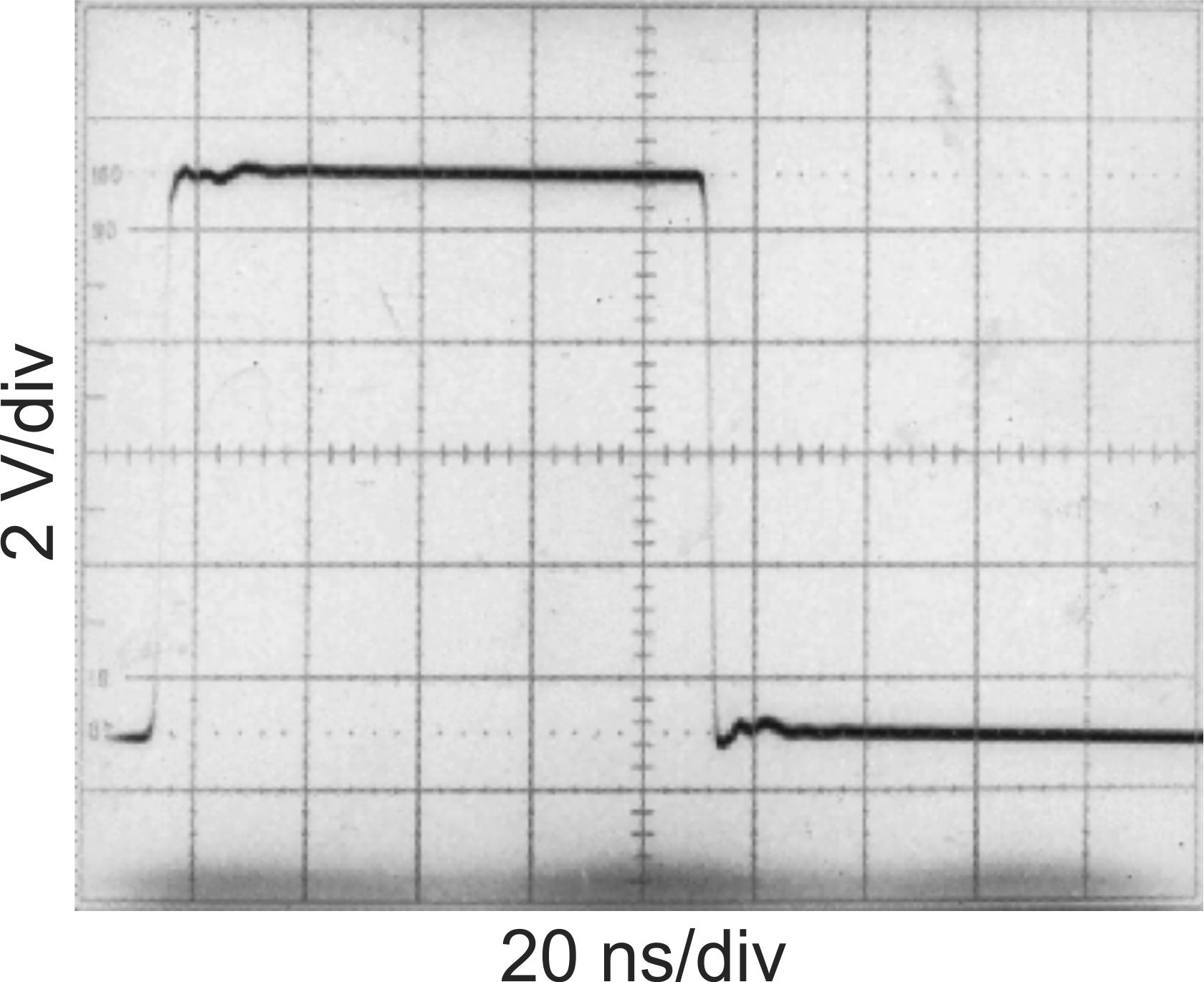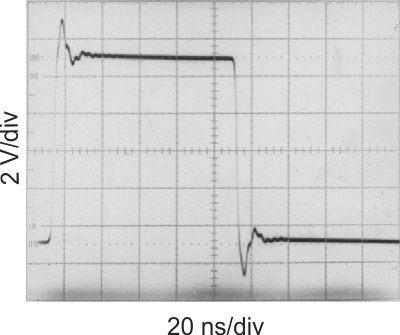SNOS760D May 1999 – February 2024 LM7171
PRODUCTION DATA
- 1
- 1Features
- 2Applications
- 3Description
- 4Pin Configuration and Functions
- 5Specifications
- 6Application and Implementation
- 7Device and Documentation Support
- 8Revision History
- 9Mechanical, Packaging, and Orderable Information
Package Options
Refer to the PDF data sheet for device specific package drawings
Mechanical Data (Package|Pins)
- D|8
- P|8
Thermal pad, mechanical data (Package|Pins)
Orderable Information
6.3.2 Termination
In high-frequency applications, reflections occur if signals are not properly terminated. Figure 6-7 shows a properly terminated signal while Figure 6-8 shows an improperly terminated signal.
 Figure 6-7 Properly Terminated
Signal
Figure 6-7 Properly Terminated
Signal Figure 6-8 Improperly Terminated
Signal
Figure 6-8 Improperly Terminated
SignalTo minimize reflection, use coaxial cable with matching characteristic impedance to the signal source. Terminate the other end of the cable with the same-value terminator or resistor. For commonly used cables, RG59 has a 75Ω characteristic impedance, and RG58 has a 50Ω characteristic impedance.